This removal guide shows detailed information about Alka virus as well as illustrated instructions on how to remove this ransomware from the infected PC. You will also be presented with several alternative data recovery methods.
Alka Virus Removal
According to the information shared by the security researcher Michael Gillespie, the founder of Alka virus, the threat is the latest strain of a vicious ransomware family dubbed STOP/Djvu. Like its predecessors, Alka is designed to corrupt computer operating systems with the goal to pass through several attack stages. During the attack, the ransomware encrypts files and appends the .alka extension to their filenames. The primary goal of Alka is to force you to contact hackers at helpmanager@firemail.cc or helpmanager@iran.ir so that they can send you back their demands. Typically, what they ask for is a ransom fee for a decryption tool and a unique key. The amount of the ransom varies from $490 to $980 in Bitcoin.
Unfortunately, most data locker ransomware like Alka lock files with strong cipher algorithms that can be decrypted by specific tools only. However, we don’t recommend that you pay hackers the ransom as there is a real chance that you will get scammed once again. Lots of times victims who pay the ransom don’t receive the key or the decrypter. The best way to recover .alka files is from a previously created backup.

Threat Summary
| Name | Alka |
| File Extension | .alka |
| Type | Ransomware, Cryptovirus |
| Short Description | The ransomware encrypts files on your computer system and demands a ransom to be paid to allegedly recover them. |
| Symptoms | The Alka ransomware will encrypt your files by appending a malicious extension to them. Then it will demand a ransom fee for their recovery. |
| Ransom Demanding Note | _readme.txt |
| Ransom Fee | $490 – $980 in Bitcoin |
| Distribution Method | Spam Emails, Email Attachments |
| Detection Tool |
See If Your System Has Been Affected by malware
Download
Malware Removal Tool
|
User Experience | Join Our Forum to Discuss Alka. |
What is Alka Ransomware?
Alka is a ransomware infection that has recently been spotted in the wild. As a strain of one of the most vicious ransomware families – STOP, the threat disrupts system security and encodes personal files. In the beginning, the ransomware corrupts system settings that help it to evade detection and hide malicious files. Beware that when an infection with Alka ransomware occurs, some major registry keys in the Registry Editor are contaminated. The reason is that their functionalities can enable it to launch malicious files every time the infected system is started.
As for the spread of Alks, techniques like spam emails, email attachments, hacked web pages, and corrupted freeware installers are likely to be utilized. Since malspam propagation technique enables hackers to spread their malicious code on a large scale it is considered to be the main one. Malwpam or massive email spam campaigns that try to deliver malicious code has its traits.
So how to recognize an email that endangers the overall security of your PC and data stored on its drives? First: Does the email have an attached file of common type or a link presented as a button, an image, a plain URL or another clickable form? If the answer is positive then avoid interacting with these elements. If you believe that you should view the content then scan the file / link with online malware scanners like VirusTotal. The results will provide information about the security level of the content.
Among the most popular Windows file types that are used by malware are executable files, documents and other Microsoft Office files, application files, script files, PDFs, temporary files and other.
.Alka File Extension
All initial malicious changes performed by the ransomware aim to enable it to reach the data encryption stage. During this stage, the ransomware launches a strong cipher algorithm to encrypt personal files. All drives and folders are scanned for commonly used types of files as they are likely to store valuable user data. As a result of encryption, corrupted files receive the malicious extension .alka .
Unfortunately, encrypted files remain inaccessible after encryption. The malicious file extension .alka may appear at the end of document, music, project, database, image, video, backup, archive, and audio files. It should be noted that in order to remain unnoticed Alka displays a fake Windows update pop-up during the encryption:
At the end of the attack, Alka virus drops a ransom message to extort a ransom fee from victims. In fact, the primary goal of Alka virus is to blackmail you into paying a ransom fee to hackers. So its ransom note called _readme.txt informs that the decryption of corrupted files can be realized after you pay hackers a ransom fee ($490 – $980 in Bitcoin). Here is the full text content of this file:
ATTENTION!
Don’t worry, you can return all your files!
All your files like photos, databases, documents and other important are encrypted with strongest encryption and unique key.
The only method of recovering files is to purchase decrypt tool and unique key for you.
This software will decrypt all your encrypted files.
What guarantees you have?
You can send one of your encrypted file from your PC and we decrypt it for free.
But we can decrypt only 1 file for free. File must not contain valuable information.
You can get and look video overview decrypt tool:
https://we.tl/t-7YSRbcuaMa
Price of private key and decrypt software is $980.
Discount 50% available if you contact us first 72 hours, that’s price for you is $490.
Please note that you’ll never restore your data without payment.
Check your e-mail “Spam” or “Junk” folder if you don’t get answer more than 6 hours.To get this software you need write on our e-mail:
helpmanager@firemail.ccReserve e-mail address to contact us:
helpmanager@iran.irYour personal ID:
Here you can see a screenshot of the Alka ransom message that is forcing you to pay a ransom to decrypt compromised files:
You should NOT under any circumstances contact cybercriminals or pay any ransom sum to them. This action does not guarantee the recovery of your encrypted .alka files.
At this point, STOP ransomware strains associated with .alka extension are not decryptable by Michael Gillespie or Emsisoft free decryption tools. However, as soon as we notice security researchers’ announcement about an update that supports the decryption of Alka STOP ransomware variants we will update this article with information on how to decrypt files for free.
How to Remove Alka Virus
The so-called Alka ransomware virus is a threat with a highly complex code that disrupts system security in order to encrypt personal files. Hence the infected system could be used in a secure manner again only after you remove all malicious files and objects created by the ransomware. The steps presented in the ransomware removal guide below will help you with the complete removal process. Beware that the manual ransomware removal is suitable for more experienced computer users. If you don’t feel comfortable with the manual steps navigate to the automatic part of the guide. It is also worth mentioning that personal data remains encrypted even after the complete removal of Alka virus. Its removal only prevents it from causing further encryptions and security issues.
Step 5 from our Alka ransomware removal guide presents alternative data recovery methods that may be efficient for the recovery of encrypted files. Beware that you should make copies of all encrypted files and save them on a flash drive for example before the beginning of the recovery process.
- Step 1
- Step 2
- Step 3
- Step 4
- Step 5
Step 1: Scan for Alka with SpyHunter Anti-Malware Tool



Ransomware Automatic Removal - Video Guide
Step 2: Uninstall Alka and related malware from Windows
Here is a method in few easy steps that should be able to uninstall most programs. No matter if you are using Windows 10, 8, 7, Vista or XP, those steps will get the job done. Dragging the program or its folder to the recycle bin can be a very bad decision. If you do that, bits and pieces of the program are left behind, and that can lead to unstable work of your PC, errors with the file type associations and other unpleasant activities. The proper way to get a program off your computer is to Uninstall it. To do that:


 Follow the instructions above and you will successfully delete most unwanted and malicious programs.
Follow the instructions above and you will successfully delete most unwanted and malicious programs.
Step 3: Clean any registries, created by Alka on your computer.
The usually targeted registries of Windows machines are the following:
- HKEY_LOCAL_MACHINE\Software\Microsoft\Windows\CurrentVersion\Run
- HKEY_CURRENT_USER\Software\Microsoft\Windows\CurrentVersion\Run
- HKEY_LOCAL_MACHINE\Software\Microsoft\Windows\CurrentVersion\RunOnce
- HKEY_CURRENT_USER\Software\Microsoft\Windows\CurrentVersion\RunOnce
You can access them by opening the Windows registry editor and deleting any values, created by Alka there. This can happen by following the steps underneath:


 Tip: To find a virus-created value, you can right-click on it and click "Modify" to see which file it is set to run. If this is the virus file location, remove the value.
Tip: To find a virus-created value, you can right-click on it and click "Modify" to see which file it is set to run. If this is the virus file location, remove the value.
Before starting "Step 4", please boot back into Normal mode, in case you are currently in Safe Mode.
This will enable you to install and use SpyHunter 5 successfully.
Step 4: Boot Your PC In Safe Mode to isolate and remove Alka





Step 5: Try to Restore Files Encrypted by Alka.
Method 1: Use STOP Decrypter by Emsisoft.
Not all variants of this ransomware can be decrypted for free, but we have added the decryptor used by researchers that is often updated with the variants which become eventually decrypted. You can try and decrypt your files using the instructions below, but if they do not work, then unfortunately your variant of the ransomware virus is not decryptable.
Follow the instructions below to use the Emsisoft decrypter and decrypt your files for free. You can download the Emsisoft decryption tool linked here and then follow the steps provided below:
1 Right-click on the decrypter and click on Run as Administrator as shown below:
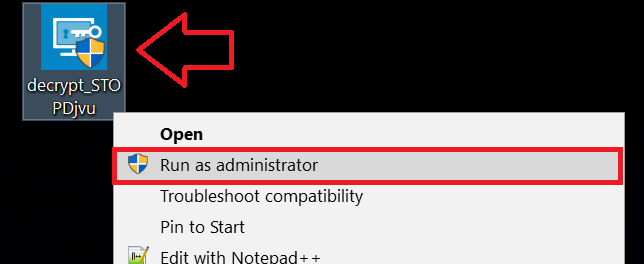
2. Agree with the license terms:
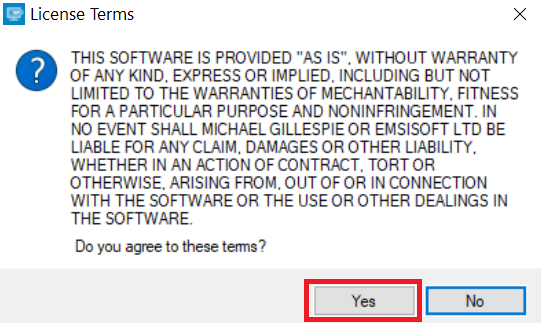
3. Click on "Add Folder" and then add the folders where you want files decrypted as shown underneath:
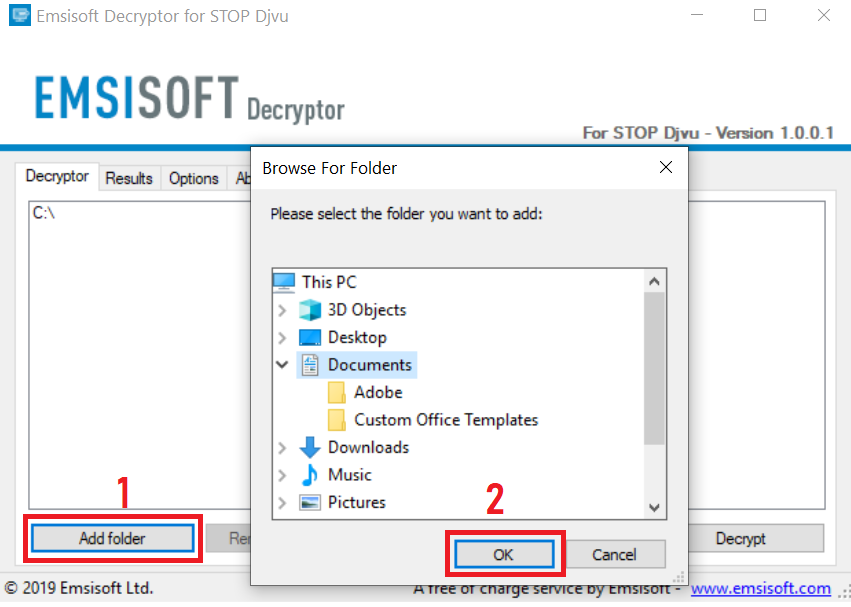
4. Click on "Decrypt" and wait for your files to be decoded.

Note: Credit for the decryptor goes to Emsisoft researchers who have made the breakthrough with this virus.
Method 2: Use data recovery software
Ransomware infections and Alka aim to encrypt your files using an encryption algorithm which may be very difficult to decrypt. This is why we have suggested a data recovery method that may help you go around direct decryption and try to restore your files. Bear in mind that this method may not be 100% effective but may also help you a little or a lot in different situations.
Simply click on the link and on the website menus on the top, choose Data Recovery - Data Recovery Wizard for Windows or Mac (depending on your OS), and then download and run the tool.
Alka-FAQ
What is Alka Ransomware?
Alka is a ransomware infection - the malicious software that enters your computer silently and blocks either access to the computer itself or encrypt your files.
Many ransomware viruses use sophisticated encryption algorithms to make your files inaccessible. The goal of ransomware infections is to demand that you pay a ransom payment to get access to your files back.
What Does Alka Ransomware Do?
Ransomware in general is a malicious software that is designed to block access to your computer or files until a ransom is paid.
Ransomware viruses can also damage your system, corrupt data and delete files, resulting in the permanent loss of important files.
How Does Alka Infect?
Via several ways.Alka Ransomware infects computers by being sent via phishing emails, containing virus attachment. This attachment is usually masked as an important document, like an invoice, bank document or even a plane ticket and it looks very convincing to users.
Another way you may become a victim of Alka is if you download a fake installer, crack or patch from a low reputation website or if you click on a virus link. Many users report getting a ransomware infection by downloading torrents.
How to Open .Alka files?
You can't without a decryptor. At this point, the .Alka files are encrypted. You can only open them once they are decrypted using a specific decryption key for the particular algorithm.
What to Do If a Decryptor Does Not Work?
Do not panic, and backup the files. If a decryptor did not decrypt your .Alka files successfully, then do not despair, because this virus is still new.
Can I Restore ".Alka" Files?
Yes, sometimes files can be restored. We have suggested several file recovery methods that could work if you want to restore .Alka files.
These methods are in no way 100% guaranteed that you will be able to get your files back. But if you have a backup, your chances of success are much greater.
How To Get Rid of Alka Virus?
The safest way and the most efficient one for the removal of this ransomware infection is the use a professional anti-malware program.
It will scan for and locate Alka ransomware and then remove it without causing any additional harm to your important .Alka files.
Can I Report Ransomware to Authorities?
In case your computer got infected with a ransomware infection, you can report it to the local Police departments. It can help authorities worldwide track and determine the perpetrators behind the virus that has infected your computer.
Below, we have prepared a list with government websites, where you can file a report in case you are a victim of a cybercrime:
Cyber-security authorities, responsible for handling ransomware attack reports in different regions all over the world:
Germany - Offizielles Portal der deutschen Polizei
United States - IC3 Internet Crime Complaint Centre
United Kingdom - Action Fraud Police
France - Ministère de l'Intérieur
Italy - Polizia Di Stato
Spain - Policía Nacional
Netherlands - Politie
Poland - Policja
Portugal - Polícia Judiciária
Greece - Cyber Crime Unit (Hellenic Police)
India - Mumbai Police - CyberCrime Investigation Cell
Australia - Australian High Tech Crime Center
Reports may be responded to in different timeframes, depending on your local authorities.
Can You Stop Ransomware from Encrypting Your Files?
Yes, you can prevent ransomware. The best way to do this is to ensure your computer system is updated with the latest security patches, use a reputable anti-malware program and firewall, backup your important files frequently, and avoid clicking on malicious links or downloading unknown files.
Can Alka Ransomware Steal Your Data?
Yes, in most cases ransomware will steal your information. It is a form of malware that steals data from a user's computer, encrypts it, and then demands a ransom in order to decrypt it.
In many cases, the malware authors or attackers will threaten to delete the data or publish it online unless the ransom is paid.
Can Ransomware Infect WiFi?
Yes, ransomware can infect WiFi networks, as malicious actors can use it to gain control of the network, steal confidential data, and lock out users. If a ransomware attack is successful, it could lead to a loss of service and/or data, and in some cases, financial losses.
Should I Pay Ransomware?
No, you should not pay ransomware extortionists. Paying them only encourages criminals and does not guarantee that the files or data will be restored. The better approach is to have a secure backup of important data and be vigilant about security in the first place.
What Happens If I Don't Pay Ransom?
If you don't pay the ransom, the hackers may still have access to your computer, data, or files and may continue to threaten to expose or delete them, or even use them to commit cybercrimes. In some cases, they may even continue to demand additional ransom payments.
Can a Ransomware Attack Be Detected?
Yes, ransomware can be detected. Anti-malware software and other advanced security tools can detect ransomware and alert the user when it is present on a machine.
It is important to stay up-to-date on the latest security measures and to keep security software updated to ensure ransomware can be detected and prevented.
Do Ransomware Criminals Get Caught?
Yes, ransomware criminals do get caught. Law enforcement agencies, such as the FBI, Interpol and others have been successful in tracking down and prosecuting ransomware criminals in the US and other countries. As ransomware threats continue to increase, so does the enforcement activity.
About the Alka Research
The content we publish on SensorsTechForum.com, this Alka how-to removal guide included, is the outcome of extensive research, hard work and our team’s devotion to help you remove the specific malware and restore your encrypted files.
How did we conduct the research on this ransomware?
Our research is based on an independent investigation. We are in contact with independent security researchers, and as such, we receive daily updates on the latest malware and ransomware definitions.
Furthermore, the research behind the Alka ransomware threat is backed with VirusTotal and the NoMoreRansom project.
To better understand the ransomware threat, please refer to the following articles which provide knowledgeable details.
As a site that has been dedicated to providing free removal instructions for ransomware and malware since 2014, SensorsTechForum’s recommendation is to only pay attention to trustworthy sources.
How to recognize trustworthy sources:
- Always check "About Us" web page.
- Profile of the content creator.
- Make sure that real people are behind the site and not fake names and profiles.
- Verify Facebook, LinkedIn and Twitter personal profiles.



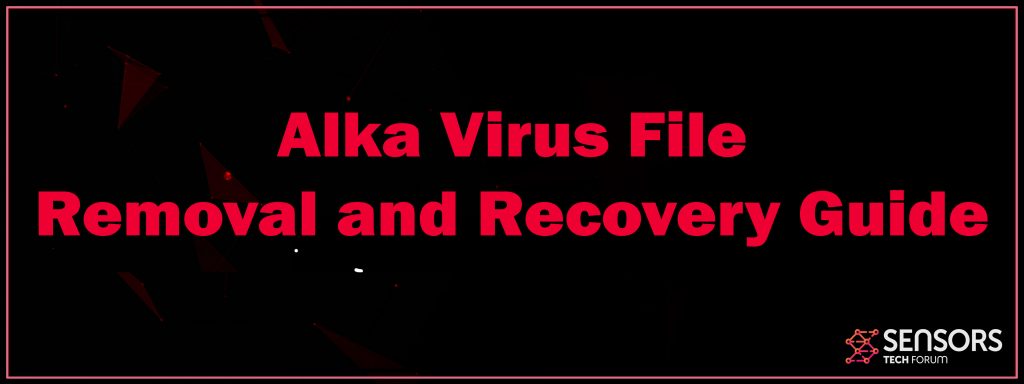
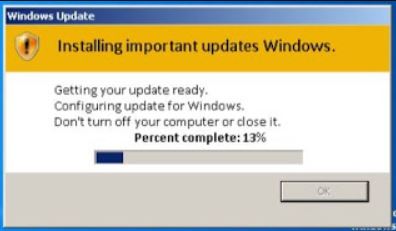
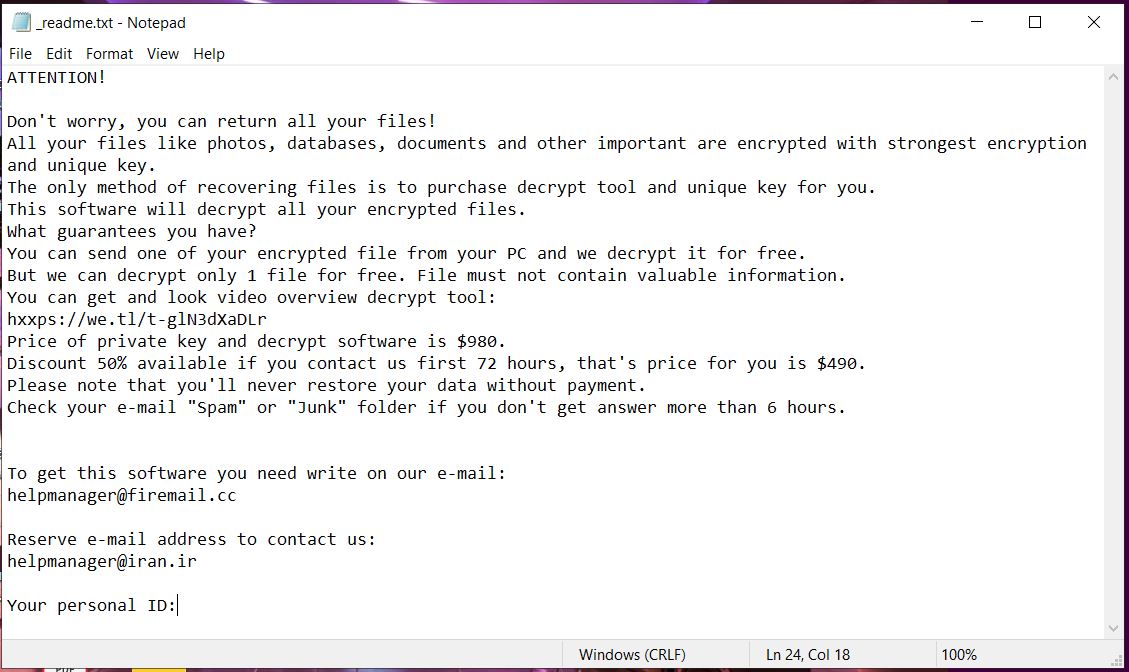

I’m looking forward for this, i got my pc infected by alka, i need to recover my files as soon as the discryption tool found. I did remove the virus but my files still not recover yet. Tell me when the Tool ready
Ik ben ook benieuwd :(
Hello Mr./s. Author, please give me permission to share your article to my friends, thankyou :)
My PC is infected by .alka (extension). Please notify me whenever a decrypter is available.